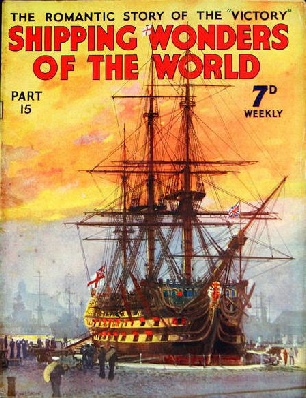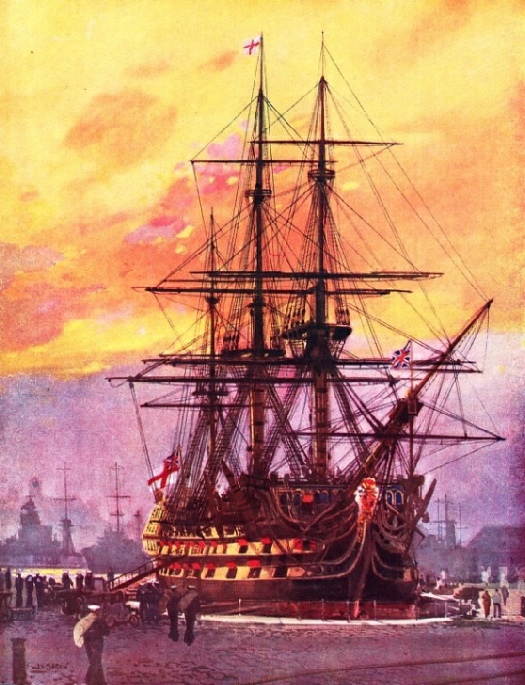
© Shipping Wonders of the World 2012-



Part 15
Part 15 of Shipping Wonders of the World was published on Tuesday 19th May 1936.
This issue included a colour plate illustrating HMS Victory by Frank H Mason. This accompanied the article The World’s Most Famous Ship and the plate was also used for the cover.
The Cover
The cover of this week’s part is a reproduction of Frank H Mason’s painting of HMS Victory as she is
to-day.

Contents of Part 15
Ship Surgery
The story of the Suevic, concluded from part 14.
Southampton: Britain’s Premier Passenger Centre
A home for the world's largest ocean-going liners, the fourth port in Great Britain for exports, Southampton’s record is one of continuous progress and achievement.
This chapter is the fourth article in the series Great Ports of the World.
Adventures of the Ice-Breaker
Time lost through laid-up or delayed shipping is one of the most serious problems that port and shipping authorities must face. Fog and ice are chiefly responsible for any such delay. This chapter describes the work of the vessels that free ice-bound trade routes.
Two Great Racing Rivals
The Brilliant and the Pericles, two fine-lined sailing vessels, were built for the Australian route. Year after year they engaged in some of the most exciting races on record.
The article is the fifth in the series Speed Under Sail.
River Plate Type Cross-Channel Ship
At the mouth of the big River Plate waterway system lie the important ports of Buenos Aires and Montevideo. It is necessary to cater for the busy traffic between these towns by means of a fast overnight service. British shipbuilders just before the war of 1914-1918 constructed two vessels for this work, the Ciudad de Buenos Aires and Ciudad de Montevideo. Accommodation for 494 first-class passengers is arranged on a long, narrow, shallow hull with a draft of only 10 feet, and a total height from keel to awning deck of only 23 ft 3 in, and a beam of 44 feet.
This is the tenth article in the series Merchant Ship Types. There is a separate chapter on “The River Plate”.
The World’s Most Famous Ship: HMS Victory
HMS Victory has played a noble part in the making of British naval history. To-day, restored to her Trafalgar condition, she is a monument to, and a proud link with, a great tradition.
HMS Victory (colour plate)
Nelson’s Flagship as She is
To-day
An impression of HMS Victory by Frank H Mason. In 1922 the fabric of this famous ship was in danger of falling to pieces. An appeal was started and, largely because of the generosity of Sir James Caird, the well-known shipowner, enough money was raised to enable the Victory to be reconstructed and restored to the condition of her Trafalgar days. She was put in an iron cradle and, encased in cement, carefully preserved in dry dock at Portsmouth Dockyard.
The Mighty Amazon
South America’s great waterway with its many tributaries is a strange and remarkable ocean highway that leads to the heart of a continent. This is the fourth article in the series World Waterways.
The article is concluded in part 16.
